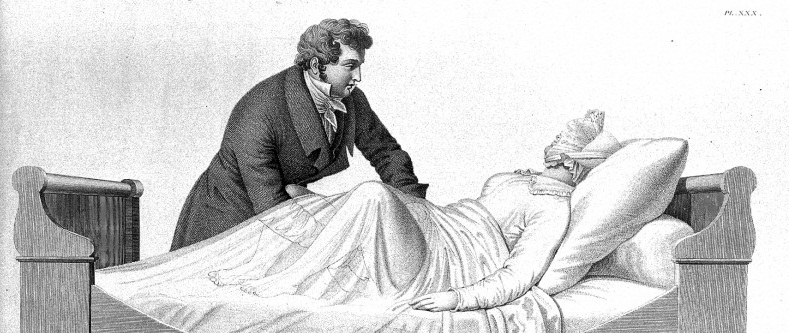
Yet another study has been released telling women how they can, and should, find orgasms and sexual pleasure. And as usual the online commentary is immediate.
The way science tells women they’re supposed to enjoy sex is as fickle as the way science tells us we’re supposed to have a healthy diet. And like the high vs low fat diet or the carb vs no carb debate, the controversy between the clitoral and vaginal orgasm rages on.
I’m thrilled that they’re doing studies at all, as women tend to be left out of much scientific research. (Prescription medications are often only tested on men, for example.) Where I take issue is that this is simply another set of ‘shoulds’ bound to make women feel broken or inadequate.
The first problem with this research, at least the way it’s described in a Salon article, is that they’re looking for an actual structure in the vaginal wall. And although the g-spot can have an apparent texture, especially during high arousal, it isn’t a distinct anatomical structure.
In fact, the g-spot isn’t a spot at all. It’s simply an area of the vaginal wall which can be in different areas and be of different sizes. What you’re really aiming for is the urethral sponge, which becomes engorged during arousal. That’s because the urethra is surrounded by erectile tissue, so it becomes engorged right along with the rest of the network of erectile tissue found in the vulva, vagina, and surrounding structures.
As for g-spot orgasms, and female ejaculation, which are also called into question in the recent article, maybe you have to see them to believe them. I’ve been on both the giving and receiving side of these orgasms and while that may only be anecdotal, I’ve got the puddles to prove it.
What all of this research glosses over is that there are a variety of ways to reach orgasm. From clitoral stimulation to penetration to full body energetic orgasms and more. There’s no sense invalidating anyone’s experience or pleasure.
The main point is that all bodies are different. What’s important is that women (or people of any gender identity) get to know their own bodies well. It takes some thorough hands-on research to learn what your body likes. From there you can show your partners how you like to be touched.
For partners: never assume the person you’re with now will like what the last person you were with liked. Rather than making assumptions, ask questions. But not just any questions. Questions like, “Do you like this,” or “Is this okay,” will not elicit the most valuable information. Try asking, “How do you like to be touched,” or “Would this be better harder or softer?” When you ask an open ended question, or a question with a choice between two things, you get much more useful information than a yes/no question gives you.
In my practice the most common thing I tell people is to slow down. The problem with talking about orgasms is that it can become very goal oriented. It leaves people who aren’t having orgasms out of the discussion of intimacy and sexual pleasure. And it creates even more anxiety around sexual performance. This is a dangerous cycle because anxiety about performing makes it harder to relax and enjoy. That’s why I urge everyone to find multiple paths to intimacy. If your journey leads to an orgasm that’s fantastic, but even if it doesn’t, it’s still worth the trip.
Want to learn more? I’ve got a class coming up in Portland that will cover all this information and more. Mapping the Vulva: Anatomy, Communication, Touch & Pleasure. If you’re anywhere else in the world we can have a session by phone or skype. Contact me to get started.
